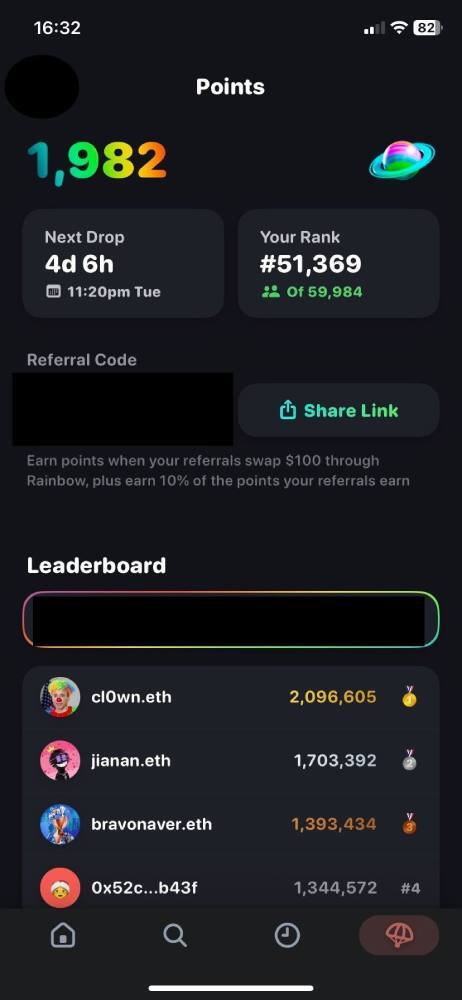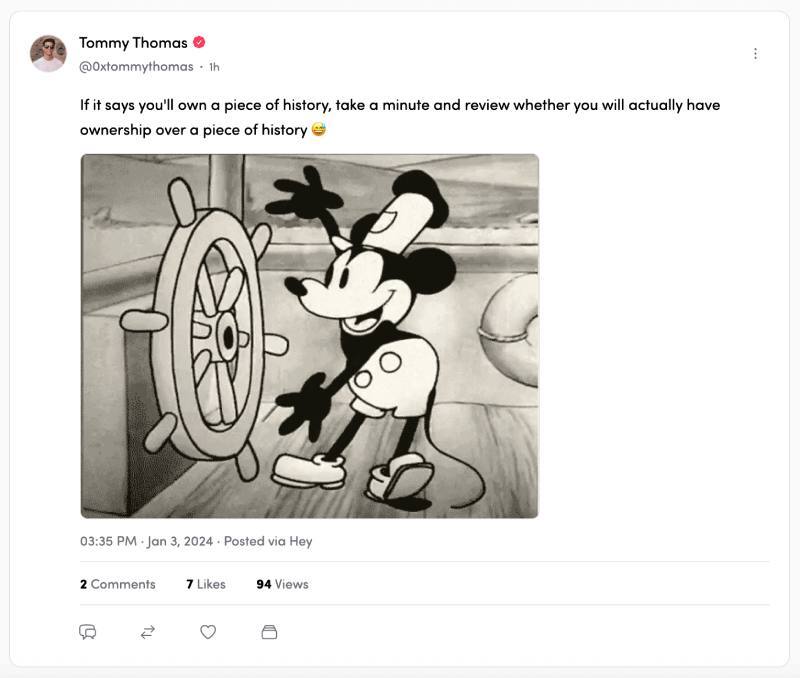7 Web3 Marketing Trends for 2024
AdEx unveils the key Web3 marketing trends 2024: embracing cross-promotion, influencer strategies, DeSoc, and DePIN to achieve your marketing goals.

In the landscape of Web3 marketing, 2024 is likely to be a year of groundbreaking changes and innovative strategies. This article delves into the latest trends, highlighting the shift towards cross-promotion among Web3 projects, the rising role of Web3 influencers, and the creative use of gamification in marketing campaigns. It also explores the integration of decentralized social media (DeSoc) and smart contract wallets, showcasing how these technologies are revolutionizing customer engagement. We'll analyze how these trends reshape digital marketing, offering a blend of technology, creativity, and user empowerment that indicates a new era of engagement, transparency, and decentralization in Web3.
Cross-promoting with other Web3 projects
Cross-promotion among different Web3 projects is emerging as a key trend in the rapidly evolving Web3 marketing. This approach involves working with other companies to spread new ideas and resources among different audiences, create a positive outcome, and increase visibility for everyone involved.
The essence of cross-promotion in Web3 lies in leveraging the strengths and audiences of different projects to achieve shared goals. You can tap into new communities by aligning with other entities, expanding your reach and influence. Cross-promotion also facilitates resource sharing, allowing projects to pool expertise, technology, and marketing resources. This collaboration leads to more innovative and impactful campaigns, as projects can combine their unique offerings and perspectives.
A compelling example of successful promotional collaboration between Web3 projects is the partnership between Aave and Chainlink, both prominent DeFi space players.
Aave, a decentralized lending protocol, integrated Chainlink's decentralized oracle network to secure its platform by obtaining accurate, real-time price feeds for the assets on its platform.
The collaboration was mutually beneficial. For Aave, using Chainlink's oracles meant a significant enhancement in trust and functionality, attracting more users to its platform. This partnership validated its technology for Chainlink and expanded its reach within the DeFi community.
The @AaveAave oracle network powered by Chainlink is now live on mainnet & currently securing 16 cryptocurrency price feeds! Aave is one of the first DeFi lending protocols to leverage off-chain data for calculating lending rates via decentralized oracles. https://t.co/Wash7nozDt
— Chainlink (@chainlink) January 9, 2020
This partnership was not just a technical integration but also a marketing success. It highlighted how Web3 projects can leverage each other's strengths to achieve common goals, creating a ripple effect of increased visibility and credibility within the broader blockchain community.
Introducing gamification and quests to marketing campaigns
Gamification in Web3 marketing is revolutionizing how brands engage with their audience. By integrating game design elements into non-game contexts, these strategies tap into the intrinsic psychological motivations of users, such as the desire for achievement, social interaction, competition, and reward.
Platforms like Galxe, Layer3, and Zealy are at the forefront of this trend. They offer tools to organize quests (campaigns) where participants complete tasks in exchange for rewards. This approach boosts engagement and fosters a sense of community and belonging among users.
The psychology behind gamification relies on rewarding user actions to encourage desired behaviors. This is effective because it taps into fundamental human drives, such as the need for recognition, status, and accomplishment. By gamifying marketing campaigns, brands can create more engaging and interactive experiences that resonate deeply with their audience.
Studies have shown significant increases in engagement and user retention through gamification. For example, a report by Gartner predicted that gamified services for consumer goods marketing and customer retention would become as important as Facebook, eBay, or Amazon. This prediction is becoming a reality in Web3, where gamified experiences are increasingly prevalent.
A notable trend is the distribution of “points” for engagement. This concept, exemplified by Rainbow Wallet, holds significant potential for 2024. In cases where projects do not have their tokens, points become a speculative asset. Users are often motivated by the prospect that accumulating more points could lead to larger airdrops or rewards in the future.

Partnering with Web3 influencers
The rise of Web3 influencers marks a significant growth in Web3 marketing. These Key Opinion Leaders (KOLs) bring unique characteristics that set them apart from traditional influencers. Unlike their counterparts in the conventional social media sphere, KOLs are deeply ingrained in the intricacies of the blockchain, cryptocurrencies, and dApps. Their content often revolves around these themes, offering insights and commentary that resonate with a tech-savvy audience.
One of the most notable differences is their community-centric approach. Web3 influencers tend to foster more interactive and engaged communities. Their followers are not just passive content consumers but active participants in discussions about Web3, crypto assets, and the future of decentralization.
For brands aiming to collaborate with these KOLs, it's essential to understand their audience and the nature of their influence. Create partnerships that align with the influencers' expertise and audience interests. This could involve collaborative content creation, endorsements of Web3 products, or participation in brand-sponsored virtual events and discussions.
Moreover, partnering with Web3 influencers can offer significant benefits, such as tapping into their established, engaged communities, which often consist of tech-savvy and crypto-interested individuals. This can enhance brand visibility and credibility within the Web3 space. Additionally, influencers can provide unique insights and creative approaches to content, effectively communicating complex Web3 concepts to a broader audience. This partnership fosters trust and interest among potential customers who value the opinions of these influencers.
Some well-respected KOLs in the Web3 space include Stacy Muur, Leshka, and DeFi Saint, among others. These influencers have established themselves as authoritative voices in the Web3 community. For instance, Stacy Muur is known for her insightful analysis of blockchain trends, Leshka for her focus on decentralized finance (DeFi), and DeFi Saint for his comprehensive coverage of cryptocurrency news and developments.
The DA wars for Chains (RaaS) not inclusive.
— DeFI Saint 🦇🔊 (@TheDeFISaint) January 22, 2024
• @MantaNetwork Pacific = Celestia DA
• @0xMantle = Currently using Mantle DA and to use Eigen DA when live.
• @arbitrum Orbit = Celestia DA, Near DA
• @Optimism Stack = Celestia DA, Avail DA.
• @0xPolygon CDK = Near DA,… pic.twitter.com/GqlNZadvvp
Looking into decentralized physical infrastructure networks (DePIN)
Decentralized Physical Infrastructure Networks (DePIN) represent an innovative intersection of physical infrastructure with the blockchain. At its core, DePIN involves leveraging decentralized networks to enhance real-world interactions and experiences. This concept involves using blockchain to manage, verify, and secure interactions in physical spaces, such as retail environments, public spaces, or event venues.
The potential of DePIN in Web3 marketing is vast. By integrating decentralized networks with physical infrastructure, brands can create more immersive, interactive, and personalized consumer experiences. This integration allows for novel ways of customer engagement, data collection, and personalized marketing strategies, all underpinned by the security and transparency of blockchain technology.
One emerging trend in DePIN is geolocation-based marketing, where consumers receive personalized content or promotions based on their physical location, verified and secured through blockchain. It promises more targeted and relevant marketing efforts, enhancing the consumer experience and increasing engagement.
In retail, companies are exploring using DePIN to enhance customer experiences. For instance, integrating blockchain with in-store sensors and IoT devices can provide shoppers personalized recommendations and offers, all while ensuring data security and customer privacy.
We're thrilled to partner with @VodafoneGroup, bringing #Web3 to Vodafone's business clients via a bridge between Vodafone DAB and the Aventus Network. Leveraging Vodafone's vast global network with 160M+ IoT connections.
— Aventus (@AventusNetwork) August 3, 2023
More information here: https://t.co/KdPVzs6KH0 pic.twitter.com/QpuW67tKSq
Another example is the use of blockchain in smart city initiatives. Cities like Dubai have embarked on projects integrating blockchain technology into various aspects of urban infrastructure. This integration allows for more efficient city management and offers unique localized marketing and engagement opportunities, leveraging blockchain's decentralized and secure nature.
Utilizing decentralized advertising platforms
Traditional digital advertising platforms like Google and Facebook rely heavily on collecting user data to target ads effectively. While successfully reaching large audiences, this approach often raises concerns regarding privacy and data misuse. In contrast, decentralized advertising platforms offer a more privacy-respecting solution, where user data is not centrally collected and stored, reducing the risks of data breaches and misuse.
Moreover, Web3 businesses face legislative hurdles to accessing platforms like Google and Facebook. Regulatory frameworks are still catching up with the advancements in blockchain technology, leading to uncertainties and restrictions for Web3 businesses. These platforms often have stringent policies regarding cryptocurrency and blockchain-related advertisements, which can limit the exposure of Web3 businesses.
Despite these challenges, several decentralized advertising solutions have emerged. Brave Browser is a notable example of revolutionizing the online advertising model. It uses the Basic Attention Token (BAT) to reward users for their attention to ads. Users opt-in to view ads and are compensated with BAT tokens, creating a user-centric model that respects privacy and rewards engagement.
Another great example is AdEx, a Web-native advertising platform. Its AdEx ZK targeting engine leverages zero-knowledge principles to improve user privacy and fight ad fatigue, thus enhancing campaign performance. It utilizes in-situ processing, meaning the data never leaves the user’s device and is processed on it. Users can control the type of ads they see by selecting the categories of interest, a.k.a user-curated ads. Like Brave’s model, users who see advertisements get rewarded with ADX tokens, the network’s native token.
Big News from AdEx! 🤩 We are excited to announce our Zero-Knowledge Targeting Engine, set to become an integral part of the AdEx platform and our mission to provide the best advertising experience.
— AdEx (@AdEx_Ads) January 23, 2024
What will AdEx ZK bring to the table:
🔐 Complete User Control: Your data, your… pic.twitter.com/QPgvw3GPas
Adopting smart contract wallets
Adopting smart contract wallets is a strategic move for businesses venturing into the Web3 space, especially in marketing and CRM. These wallets offer advanced features that enhance marketing strategies by creating personalized and secure customer experiences. For instance, marketers can leverage smart contract wallets for simplified onboarding in Web3 applications, making user journeys smoother. Automated loyalty programs can also be implemented, rewarding users with tokens or digital assets for engagement or purchases.
One of the key advantages of smart contract wallets is their ease of onboarding, mirroring the simplicity of Web2 platforms. This user-friendly approach reduces the entry barrier and attracts new users unfamiliar with the complexities of the blockchain. Innovatively, the Peanut Protocol dApp and Ambire Wallet collaboration showcase practical applications. The campaign involved scanning a barcode on a pack of peanuts, which rewarded users with $5 in their newly-created Ambire Wallet smart account.
WE'LL ONBOARD THE NEXT BILLION USERS TO WEB3 WITH....PEANUTS?!? 😮😮😮
— Ambire Wallet (@AmbireWallet) March 29, 2023
Let us tell you the story of how we convinced 50 web3 power users to switch to Ambire Wallet with @peanutprotocol payment links and 🥜 at @EthereumDenver
Read along 👇
1/5 pic.twitter.com/1KwidA8hDR
Moreover, smart contract wallets facilitate personalized marketing through anonymized transaction data, enabling tailored campaigns. Tokenization in marketing campaigns can also be leveraged, offering branded tokens or NFTs to enhance brand engagement.
These features, ease of use, security, transaction batching, and gas abstraction, make platforms like Ambire Wallet ideal for integrating into marketing and CRM strategies. This approach streamlines operations and optimizes marketing expenses, security, and efficiency, appealing to a tech-savvy audience and aligning with the ethos of decentralization and user empowerment.
Doubling down on DeSoc platforms
Decentralized society (DeSoc) networks differ significantly from traditional social media in their data control and user privacy approach. Unlike conventional platforms, where a central entity often monetizes user data, DeSoc platforms provide complete data ownership to users, fostering an environment that prioritizes privacy and authentic engagement.
Farcaster, a rising star in the DeSoc space, exemplifies this trend by democratizing application development for accessing its platform. It allows users to log in through various apps, each offering unique features. Popular apps like Warpcast and Supercast, designed with user input at their core, are a testament to this. Their development process is highly interactive, with founders actively seeking user feedback to shape the apps’ features. This collaborative, Web3-centric approach encourages users to participate directly in creating the applications they use.
Another exemplary DeSoc platform is Lens Protocol. While sharing the decentralized ethos of Farcaster, Lens distinctly focuses on creating a modular and interoperable framework for decentralized social media applications. It enables users to own their online relationships and content, free from platform lock-in.

Hey, alongside other applications built on Lens, like Orb and Buttrfly, demonstrates the versatility and adaptability of the protocol. These applications cater to a wide range of use cases and platforms, showcasing the potential of decentralized social media to empower users and creators alike.
DeSoc networks stand at the forefront of decentralized communication and content-sharing spaces, characterized by their emphasis on community-driven development and the absence of algorithmic manipulation. This results in more organic interactions and engagements, creating a highly appealing environment for a tech-savvy audience.
Moreover, these platforms have become hubs for influential figures in the Web3 and cryptocurrency sectors, attracting regular contributions from thought leaders like Vitalik Buterin and Balaji Srinivasan. Their involvement further elevates the significance of these networks, showcasing their potential to reshape and influence the digital landscape in profound ways.
This transition to DeSoc platforms offers a unique opportunity to engage with an audience that values transparency and authenticity. The challenge lies in adapting to a marketing approach that aligns with the decentralization and user empowerment ethos. Engaging in DeSoc platforms means building relationships based on trust and value rather than relying on traditional data-driven targeting strategies.
Summary
In 2024, Web3 marketing is at the forefront of a transformative era, embracing trends such as strategic cross-promotion, decentralized social media (DeSoc) platforms, gamification, and partnerships with Web3 influencers, enabling marketers to reshape their engagement strategies.
Integrating decentralized advertising, smart contract wallets, and DePINs underscores a shift towards more authentic, user-centric, and transparent marketing practices. As the digital landscape continues to evolve, these innovative approaches offer a glimpse into the future of marketing in the Web3 era, emphasizing community involvement, privacy, and technological advancement.
Interested in AdEx? Follow us:
X(Twitter) | Telegram | Reddit | Facebook | GitHub | Discord

